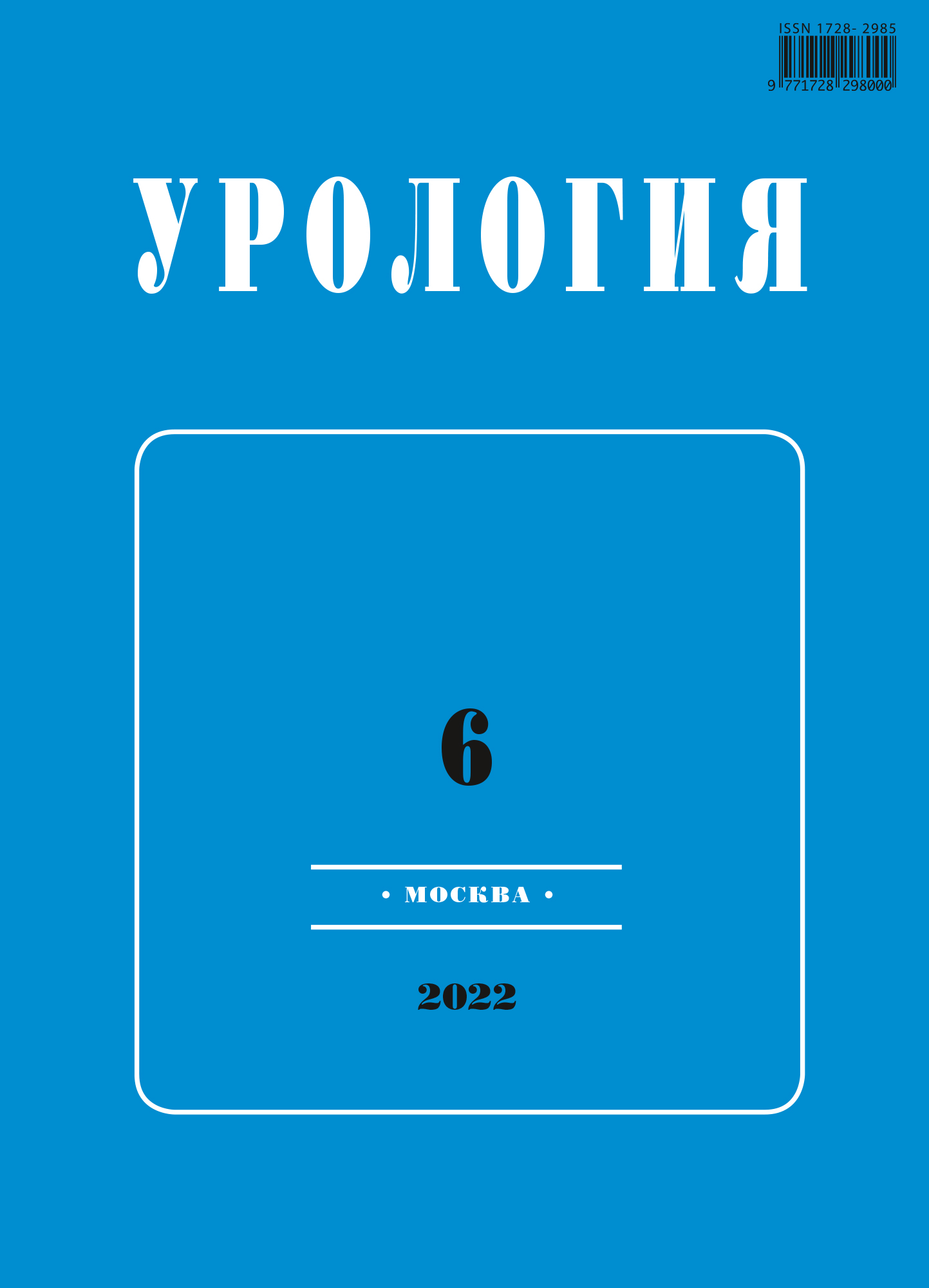Pilot study of the manifestations of synchrony of the anatomical-metabolic and functional state of the brain, kidneys and bladder
- Авторлар: Berdichevsky V.B1, Berdichevsky B.A1, Kolpakov V.V1, Sapozhenkova E.V1, Pavlova I.V1, Gonyaev A.R1, Korabelnikov M.A2
-
Мекемелер:
- Federal State Budgetary Educational Institution of Higher Education «Tyumen State Medical University» of the Ministry of Health of the Russian Federation
- GAUZ TO MKMC «Medical City»
- Шығарылым: № 6 (2022)
- Беттер: 66-70
- Бөлім: Articles
- ##submission.datePublished##: 15.12.2022
- URL: https://journals.eco-vector.com/1728-2985/article/view/277143
- DOI: https://doi.org/10.18565/urology.2022.6.66-70
- ID: 277143
Дәйексөз келтіру
Аннотация
Негізгі сөздер
Толық мәтін
Авторлар туралы
V. Berdichevsky
Federal State Budgetary Educational Institution of Higher Education «Tyumen State Medical University» of the Ministry of Health of the Russian Federation
Email: urotgmu@mail.ru
Doctor of Medical Sciences, Professor of the Department of Oncology with a course of urology Tyumen, Russia
B. Berdichevsky
Federal State Budgetary Educational Institution of Higher Education «Tyumen State Medical University» of the Ministry of Health of the Russian Federation
Email: doktor_bba@mail.ru
Doctor of Medical Sciences, Professor, Professor of the Department of Oncology with a Course of Urology Tyumen, Russia
V. Kolpakov
Federal State Budgetary Educational Institution of Higher Education «Tyumen State Medical University» of the Ministry of Health of the Russian Federation
Email: kolpakov661@rambler.ru
Doctor of Medical Sciences, Professor of the Department of Normal Physiology Tyumen, Russia
E. Sapozhenkova
Federal State Budgetary Educational Institution of Higher Education «Tyumen State Medical University» of the Ministry of Health of the Russian Federation
Email: ekaterina_chibulaeva@mail.ru
Ph.D., Associate Professor of the Department of Normal Physiology Tyumen, Russia
I. Pavlova
Federal State Budgetary Educational Institution of Higher Education «Tyumen State Medical University» of the Ministry of Health of the Russian Federation
Email: iraena@mail.ru
Candidate of Medical Sciences, Assistant of the Department of Oncology with a course of urology Tyumen, Russia
A. Gonyaev
Federal State Budgetary Educational Institution of Higher Education «Tyumen State Medical University» of the Ministry of Health of the Russian Federation
Email: a.gonyaev25@yandex.ru
postgraduate student of the Department of Oncology with a course in urology Tyumen, Russia
M. Korabelnikov
GAUZ TO MKMC «Medical City»
Email: kma_doc@mail.ru
Radiology Center; doctor-radiologist Tyumen, Russia
Әдебиет тізімі
- Lovrec P., Schuster D.M., Wagner R.H, Gabriel M., Savir-Baruch B. Characterizing and Mitigating Bladder Radioactivity on 18F-Fluciclovine PET/CT. Journal of Nuclear Medicine Technology March 2020;48(1):24/29; DOI: https://doi.org/10.2967/jnmt119.23058
- Bouchelouche K. PET/CT in Bladder Cancer: An Update Seminars in Nuclear Medicine ttps://doi.org/10.1053/j.semnuclmed.2021.12.004
- David M. Schuster, Cristina Nanni, Stefano Fanti, Shuntaro Oka Anti-1-amino-3-18F-fluorocyclobutane-1-carboxylic acid: physiologic uptake patterns, incidental findings, and variants that may simulate disease J Nucl Med. 2014;55(12):1986-1992. doi: 10.2967/jnumed.114.143628.
- Bouchelouche К. Diagnostic applications of nuclear medicine: kidney and bladder cancer. Nuclear Oncology, Springer, Cham (2022) https://doi.org/10.1053/j.semnuclmed.2021.12.004
- Kirsten Bouchelouche, Peter L. Choyke PET/Computed Tomography in Renal, Bladder, and Testicular Cancer Clin. 2015;10(3):361-374. Doi:.org/10.1016/j.cpet.2015.03.002
- Fowler C.J., Griffiths D., de Groat W.C. The neural control of micturition. Nat Rev Neurosci. 2008;9(6):453-466. doi: 10.1038/nrn2401.
- Irwin D.E., Kopp Z.S., Agatep B., Milsom I., Abrams P. Worldwide prevalence estimates of lower urinary tract symptoms, overactive bladder, urinary incontinence and bladder outlet obstruction. BJU Int. 2011;108(7):1132-1138. doi: 10.1111/j.1464-410X.2010.09993.x.
- Pierre Fiset, Tomas Paus, Thierry Daloze. Brain Mechanisms of Propofol-Induced Loss of Consciousness in Humans: a Positron Emission Tomographic Study Journal of Neuroscience. 1999;19(13);5506-5513. Doi: https://doi.org/10.1523/JNEUROSCI.19-13-05
- Andersson K.E., Arner A. Urinary bladder contraction and relaxation: physiology and pathophysiology. Physiol Rev. 2004;84(3):935-986. doi: 10.1152/PHYSREV.00038.2003.
- Merrill L., Gonzalez E.J., Girard B.M., Vizzard M.A. Receptors, channels, and signalling in the urothelial sensory system in the bladder. Nat Rev Urol. 2016;13(4):193-204. doi: 10.1038/nrurol.2016.13Corpus ID: 32305885.
- William C. de Groat, Derek Griffiths, Naoki Yoshimura Comprehensive Physiology Neural Control of the Lower Urinary Tract Volume 5 Issue 1. January 2015 Published online:23 December 201 https://doi.org/10.1002/cphy.c130056
- Stasa D. Tadic, Derek Griffiths, Andrew Murrin. Brain activity during bladder filling is related to white matter structural changes in older women with urinary incontinenc. Neuroimage. 2010;51(4):1294-1302. Published online 2010 Mar 17. doi: 10.1016/j.neuroimage.2010.03.016.
- Carrara M., Ferrario M., Bollen Pinto B. et al. The autonomic nervous system in septic shock and its role as a future therapeutic target: a narrative review. Ann.Intensive Care. 2021;11(80). https://doi.org/10.1186/s13613-021-00869
- Liang B., Liang Y., Li R. et al. Effect of renal denervation on long-term outcomes in patients with resistant hypertension. Cardiovasc Diabetol. 2021;20:117. https://doi.org/10.1186/s12933-021-01309-3
- Li L., Xiong Y.L., Hu Z.and Yao Y. Effect of Renal Denervation for the Management of Heart Rate in Patients With Hypertension: A Systematic Review and Meta-Analysis. Front. Cardiovasc. Med. 2022;8:810321. doi: 10.3389/fcvm.2021.810321.
- Siri Drangsholt, Maria Juliana Arcila Ruiz, Benoit Peyronnet.Diagnosis and management of nocturia in current clinical practice: who are nocturia patients, and how do we treat them? World Journal of Urology. 2019;37:1389-1394. doi: 10.1007/s00345-018-2511-4.
- Elena Tomilovskaya, Liubov Amirova, Inna Nosikova The First Female Dry Immersion (NAIAD-2020): Design and Specifics of a 3-Day Study Front. Physiol., 14 June 2021 | https://doi.org/10.3389/fphys.2021.661959
Қосымша файлдар







